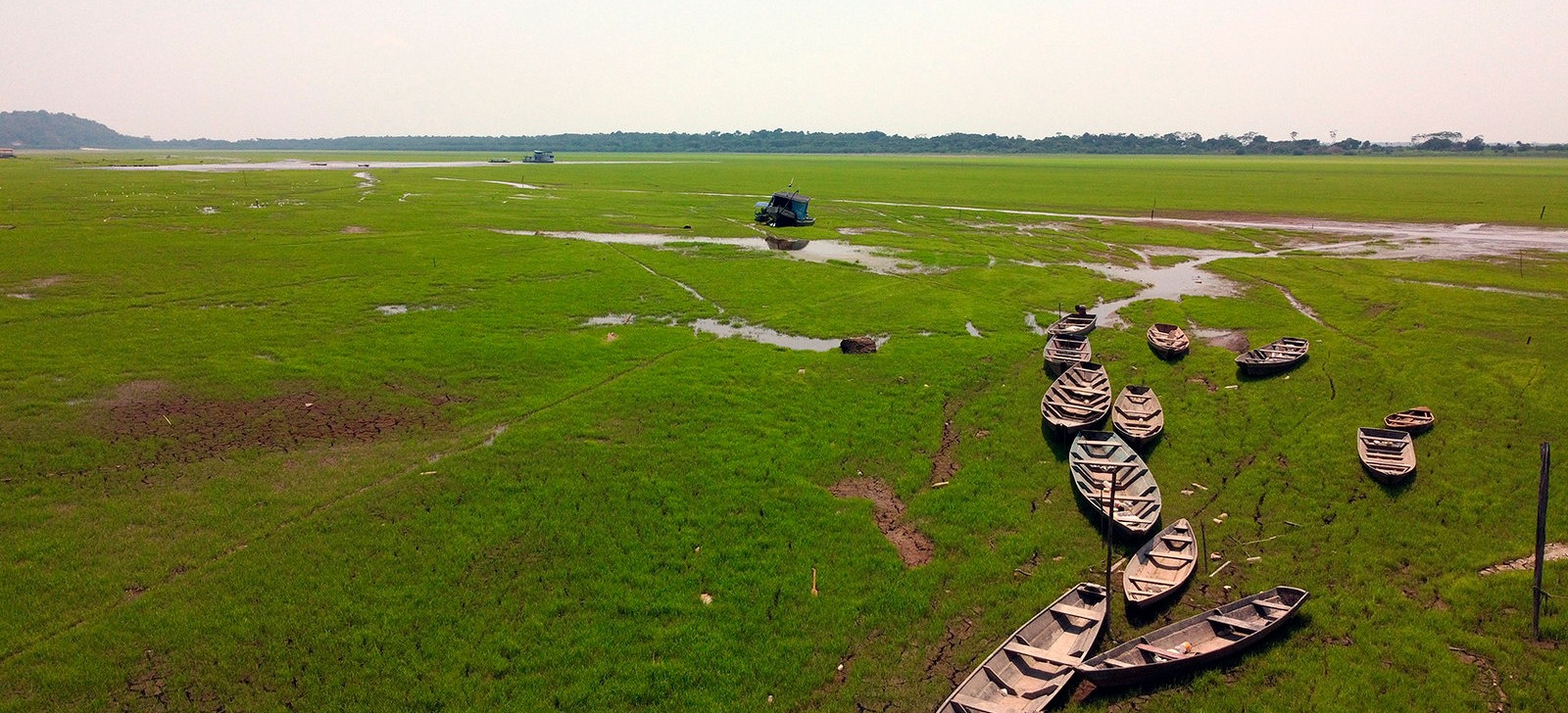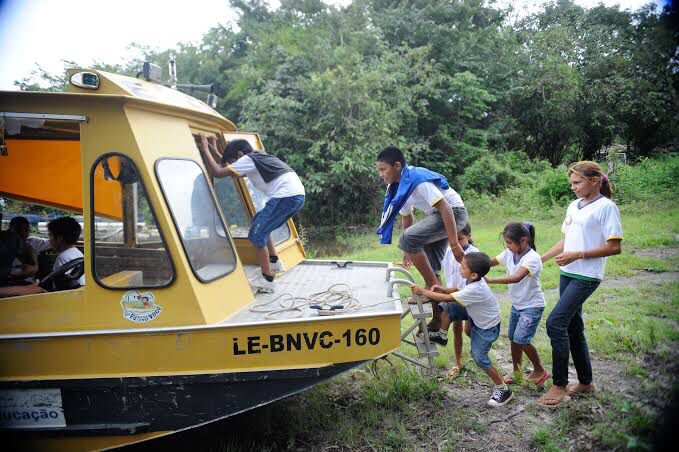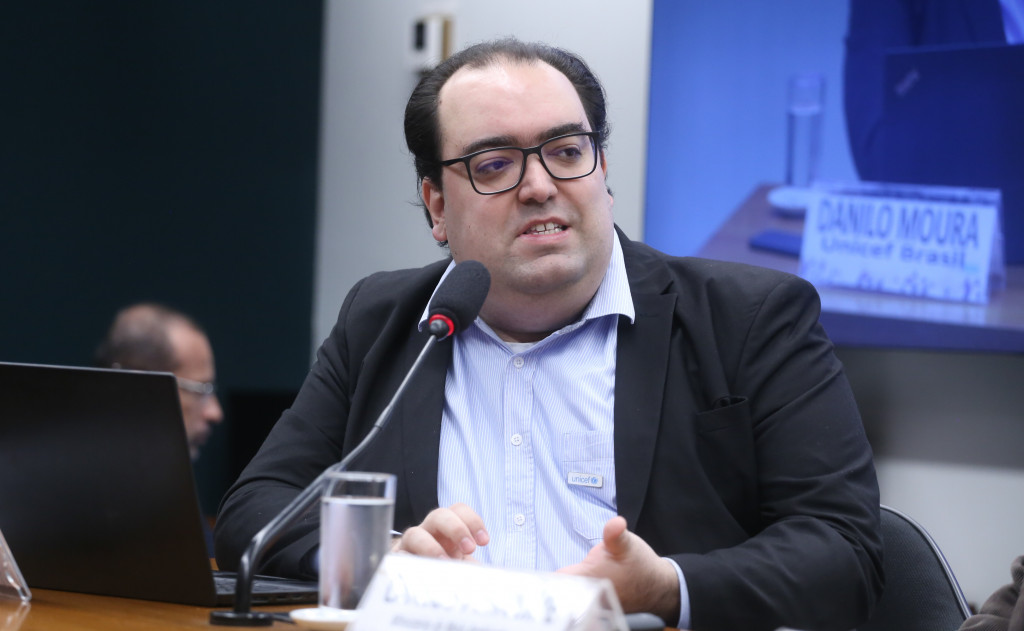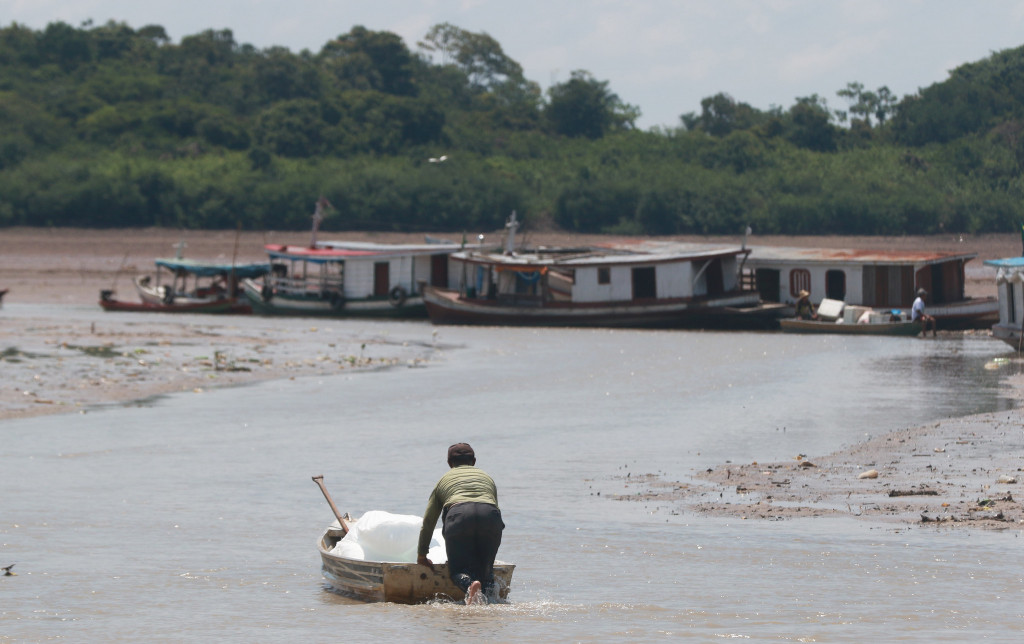Climate change affects school access for 1.17 million students in Brazil
23 de June de 2025

By Ana Cláudia Leocádio – From Cenarium
BRASÍLIA (DF) – Climate change interrupted schooling for 1.17 million students in Brazil in 2024, at least 400,000 of whom live in the Brazilian, Peruvian, and Colombian Amazon. The severe drought made rivers unnavigable, preventing students, teachers, and supplies from reaching their destinations. The information was presented by Danilo Moura, Climate-Environment and RDR Program Specialist at the United Nations Children’s Fund (UNICEF), during a public hearing at the Education Committee (CE) of the Chamber of Deputies last Wednesday, the 18th.
The committee discussed data on the climate impacts on the school environment and the air conditioning of schools in the country. According to the committee’s chair, deputy Sâmia Bonfim (Psol-SP), the information will serve as a basis for recommendations and suggestions to public managers in adapting schools to the new climate reality, which has worsened each year.

According to Danilo Moura of UNICEF, the floods in Rio Grande do Sul and the severe drought in the Amazon were the main climate events that temporarily suspended classes in Brazil last year. In the case of the drought, students in Amazonas, for instance, were kept out of school for at least a month—and in some cases, even longer.
“Droughts have long-term impacts. They often affect not just school closures, but also student attendance, enrollment, and learning outcomes. Droughts tend to affect academic performance more than the actual shutdown of schools,” the UNICEF representative explained.

Worldwide, 240 million children missed school due to climate events, according to Moura. “When we look at global impacts, a standout statistic is that the main cause of school closures last year was actually heatwaves. And this is data we don’t yet have in Brazil, for example,” explained the UNICEF representative.
In Rio Grande do Sul, beyond flooding that physically affected schools, classes were also suspended because many schools were repurposed as relief shelters for displaced residents and remained closed longer.
Moura also referred to studies showing that temperatures above 32ºC can affect school performance, in addition to secondary effects such as air pollution from wildfires, increased prevalence of diseases like respiratory and diarrheal illnesses, and those transmitted by vectors such as dengue, chikungunya, and Zika.
Urban heat islands and school air conditioning
Júlio Pedrassoli, a representative from MapBiomas, referenced data from a study carried out in partnership with the Alana Institute on early childhood and elementary schools, released in February of this year. The study mapped the proportion of schools by capital located in heat zones.
The capitals in the North Region have the highest proportion of schools exceeding 1ºC above the average temperature of their urban perimeter, with Manaus leading (97%), followed by Macapá (93%), Palmas (91.5%), and Porto Velho (91.4%). At the other end, Belém has the lowest number of schools in heat zones—33.2%—ranking last.

According to the 2022 School Census by the Anísio Teixeira National Institute for Educational Studies and Research (Inep), an agency under the Ministry of Education, 70% of schools in Brazil lack air conditioning. In the view of UNICEF’s Danilo Moura, there is no point in proposing various adaptation measures if people continue to fuel global warming, the root cause of climate change. “There is no adaptation measure strong enough if we don’t stop digging ourselves deeper into the hole,” he stressed.
Proposed solutions
During the hearing, several proposals were presented to improve schools’ climate resilience. These go beyond installing air conditioning units and involve architectural changes to move away from “box-style” school buildings and toward a bioclimatic profile—a term used by Carlos Príncipe of the Ministry of the Environment and Climate Change (MMA).
Maria Isabel Amando de Barros, a specialist in Childhood and Nature at the Alana Institute, announced that the organization will release a report with practical proposals to improve thermal regulation in schools, making them healthier spaces and more appealing environments for both learning and educators. “Schools where children can see nature as an ally, not a threat,” she emphasized.
Suggestions include implementing green roofs, green walls, green curtains, “cool islands” or mini-forests—small clusters of vegetation within school campuses. Other ideas are living tunnels, natural lighting and ventilation—strategies aimed at rethinking architectural layouts with new, nature-integrated construction techniques.
UNICEF also advocates for changing school infrastructure but emphasizes the need for managers to develop strategies and protocols to keep the educational process going during emergencies—avoiding, for example, the use of schools as shelters.
Additionally, climate change calls for new routines and procedures in schools, such as setting specific times and types of outdoor activities, especially in extremely hot areas. Equally important, says Danilo Moura, is the promotion of socio-environmental education, engaging the entire school community so students are truly prepared to understand and relate differently to the climate and the environment.
According to Viviane Vazzi Pedro, General Coordinator of Environmental Education for Diversity and Sustainability at the Ministry of Education, the agency has resumed environmental education efforts in schools. These had been removed from the curriculum during the Bolsonaro administration (2019–2022) but are now present in 67.3% of school units nationwide. In the early 2000s, she noted, this number was above 90%.

